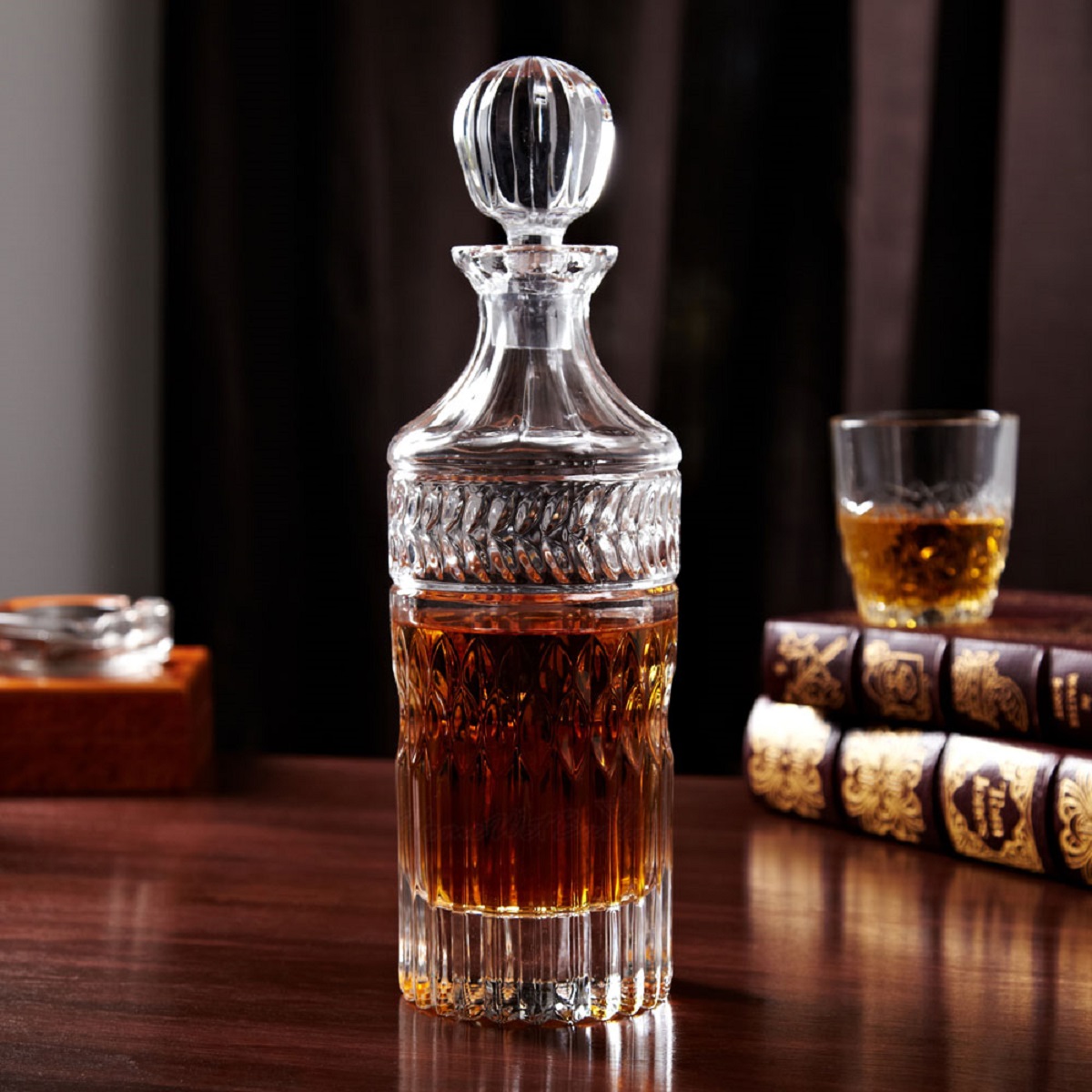

Articles
How To Store Whiskey
Modified: December 7, 2023
Need some guidance on how to store whiskey? Check out our informative articles for expert tips and tricks on preserving the rich flavors and aromas of your favorite spirits.
(Many of the links in this article redirect to a specific reviewed product. Your purchase of these products through affiliate links helps to generate commission for Storables.com, at no extra cost. Learn more)
Overview
When it comes to storing whiskey, proper care and maintenance are crucial in order to preserve its flavor, aroma, and quality. Whether you have a small collection or a vast array of bottles, following the correct storage methods will ensure that your whiskey remains in prime condition for years to come.
In this article, we will provide you with comprehensive guidelines on how to store whiskey effectively. From choosing the right storage location to monitoring and inspecting your collection, we’ll cover all the essential aspects that will help you maintain the integrity of your prized bottles.
Let’s dive into the details and learn the best practices for whiskey storage.
Key Takeaways:
- Preserve the Flavor: Store whiskey in a dark, consistent environment with controlled temperature and humidity to protect its unique taste and aroma, ensuring a remarkable drinking experience.
- Attention to Detail: Regularly monitor and inspect your whiskey collection to identify issues early, maintain optimal conditions, and appreciate the diverse flavors each bottle offers.
Read more: How To Store Opened Whiskey
Choosing the Right Storage Location
When it comes to storing whiskey, the first step is to select an appropriate storage location. Ideally, you’ll want to choose a spot that provides a stable environment and protects your bottles from external factors that can degrade the quality of the whiskey.
Here are a few key considerations when choosing the right storage location:
- Away from sunlight: Sunlight can cause the whiskey to deteriorate by accelerating chemical reactions. It’s best to keep your bottles in a dark area, away from direct sunlight or any bright artificial light sources that emit UV rays.
- Consistent temperature: Fluctuating temperatures can negatively impact the taste and overall quality of whiskey. It’s crucial to choose a location with a consistent temperature, ideally between 15-20°C (59-68°F). Avoid areas prone to extreme temperature changes, such as attics or garages.
- Low humidity: Excessive humidity can cause the labels to peel, mold growth, and damage the cork seal. Aim for a humidity level between 55-75% to ensure optimal conditions for your whiskey storage.
- Good ventilation: Adequate airflow is essential to prevent any musty odors or stagnant air from affecting your whiskey. Avoid storing your bottles in tight, enclosed spaces without proper ventilation.
By adhering to these guidelines, you can create an ideal storage environment for your whiskey collection. Not only will this protect the quality of your bottles, but it will also ensure that you can enjoy the full flavor and aroma of your favorite whiskey whenever you choose to indulge.
Temperature and Humidity Control
Proper control of temperature and humidity is essential in maintaining the integrity and longevity of your whiskey. Fluctuations in these factors can adversely affect the flavor profile and overall quality of your bottles. Let’s dive into the details of temperature and humidity control for whiskey storage:
Temperature: Whiskey should be stored in an environment with a relatively stable temperature. Extreme temperature fluctuations can cause the liquid to expand and contract, potentially leading to leakage or spoilage. It is recommended to store whiskey at a temperature between 15-20°C (59-68°F).
Avoid storing your bottles in areas that are subject to extreme heat or cold, such as near radiators, heating vents, or air conditioning units. Additionally, keep them away from sources of heat, like stoves or direct sunlight, as this can accelerate the aging process and alter the taste of the whiskey.
Humidity: Maintaining the right humidity levels is crucial for whiskey storage. Too much humidity can cause labels to peel, promote mold growth, and damage the cork seal, while low humidity can lead to evaporation and oxidization of the whiskey.
Generally, the ideal humidity range for whiskey storage is between 55-75%. To keep the humidity at a suitable level, you can use a hygrometer to monitor and adjust as necessary. Additionally, consider using a dehumidifier or humidifier to maintain the desired humidity if your storage location is prone to extremes.
By carefully controlling the temperature and humidity, you can ensure optimal conditions for your whiskey. This will help preserve its flavor, aroma, and overall quality, allowing you to enjoy a remarkable drinking experience every time you indulge in a glass.
Avoid Direct Sunlight
One crucial factor to consider when storing whiskey is to keep it away from direct sunlight. Exposure to sunlight can have adverse effects on the quality and flavor of the whiskey. Here’s why you should avoid direct sunlight when storing your bottles:
UV Rays: Sunlight contains ultraviolet (UV) rays that can degrade the whiskey over time. These rays can break down the complex compounds in the liquid, leading to changes in flavor, aroma, and color. It can result in a dull, flat taste and a loss of the whiskey’s distinct characteristics.
Temperature Fluctuations: Sunlight can cause temperature fluctuations in the storage area, especially if the bottles are exposed to direct sunlight for prolonged periods. These fluctuations can lead to expansion and contraction of the liquid, affecting the overall quality and potentially leading to leakage or spoilage.
Light Damage: Whiskey bottles are typically made of colored glass to help protect the liquid from light damage. However, prolonged exposure to sunlight can still penetrate the glass and result in flavor changes. It is essential to keep the bottles in a dark area to prevent any light damage.
To protect your whiskey from the harmful effects of sunlight, store your bottles in a dark and cool location. A cabinet, cellar, or dedicated whiskey storage unit that shields the bottles from light is ideal. If you have an open display area, consider using blinds, curtains, or UV-blocking glass to protect the bottles from direct sunlight.
By keeping your whiskey away from direct sunlight, you can ensure that it maintains its quality, flavor, and character over time. This will allow you to enjoy the true essence of the whiskey every time you pour a glass.
Proper Bottle Positioning
When it comes to storing whiskey, the position of the bottle plays a significant role in maintaining its quality and longevity. Proper bottle positioning helps ensure that the whiskey remains in optimum condition. Here are some essential tips for proper bottle positioning:
Upright Position: Most whiskeys, especially those with cork stoppers, should be stored in an upright position. This helps prevent the cork from drying out and crumbling, which can lead to air exposure and spoilage of the whiskey. Keeping the bottle upright also reduces the risk of leakage or evaporation.
Sideways Position: While upright is the preferred position, there are exceptions. Certain whiskies with screw caps or synthetic corks can be stored on their sides. However, it’s important to ensure that the seal is secure and tight to prevent any leakage or contamination.
Avoiding Constant Movement: It’s best to minimize any unnecessary movement or shaking of the whiskey bottles. Constant agitation disturbs the sediments and can negatively impact the flavor and smoothness of the whiskey. Store your bottles in a stable environment where they can remain undisturbed.
By following these guidelines for proper bottle positioning, you can ensure that your whiskey remains in prime condition. This helps maintain its taste, aroma, and overall quality, allowing you to fully appreciate the unique characteristics of each bottle when you decide to savor a glass.
Read more: How To Store Unopened Whiskey
Maintaining a Steady Environment
Creating a steady environment is essential for properly storing whiskey. Fluctuations in temperature, humidity, and other environmental factors can have a detrimental impact on the quality of the whiskey. Here are some important considerations for maintaining a steady environment:
Temperature Control: As mentioned earlier, whiskey should be stored at a consistent temperature, ideally between 15-20°C (59-68°F). Avoid storing your bottles in areas that are prone to temperature fluctuations, such as near heating vents or windows. Use a thermometer to monitor the temperature regularly and make any necessary adjustments to maintain a steady environment.
Humidity Control: Alongside temperature, it is crucial to control humidity levels. The ideal humidity range for whiskey storage is between 55-75%. Use a hygrometer to monitor the humidity in the storage area and make adjustments as needed. Maintain the humidity within this range to prevent the labels from peeling, mold growth, and damage to the cork seal.
Avoiding Rapid Changes: Rapid changes in temperature or humidity can be particularly harmful to whiskey. Avoid exposing the bottles to sudden changes in conditions as it can lead to expansion and contraction of the liquid, affecting the taste and quality. Keep the storage area insulated and protected from external influences that may cause sudden fluctuations.
Stable Shelving: Choose sturdy and stable shelving to store your whiskey bottles. Unstable or flimsy shelves can lead to accidental spills or breakage, causing irreparable damage to your collection. Ensure that the shelves are properly secured and can support the weight of the bottles to avoid any mishaps.
Minimal Vibration: Excessive vibrations can disrupt the chemical reactions that occur within the whiskey, potentially affecting the taste and flavor. Store your whiskey bottles away from any sources of vibration, such as washing machines, speakers, or heavy foot traffic areas, to maintain a steady environment.
By maintaining a steady environment, you can protect the integrity of your whiskey collection and ensure that each bottle maintains its exceptional quality. This will allow you to savor the true essence of the whiskey when you decide to enjoy a glass or share a special moment with friends and loved ones.
Store whiskey in a cool, dark place away from direct sunlight and temperature fluctuations. Keep the bottle upright to prevent the cork from drying out and store it away from strong odors to avoid affecting the flavor.
The Importance of Darkness
When it comes to storing whiskey, darkness is an essential factor to consider. Exposure to light, especially direct sunlight, can have detrimental effects on the quality and longevity of the whiskey. Here’s why darkness plays a crucial role in whiskey storage:
UV Protection: Whiskey bottles are typically made of colored glass to offer some degree of protection against light damage. However, prolonged exposure to light, especially UV rays, can still penetrate the glass and alter the flavor and aroma of the whiskey. Darkness helps shield the bottles from harmful UV rays, preserving the integrity of the liquid.
Chemical Reactions: Light, particularly sunlight, can trigger chemical reactions in the whiskey, speeding up the aging process and altering its flavor profile. These reactions can lead to the degradation of the whiskey and an imbalance in its taste. By storing whiskey in the dark, you can slow down these reactions and maintain the original character of the spirit.
Temperature Control: Light, especially direct sunlight, can cause temperature fluctuations in the storage area. This can lead to expansion and contraction of the whiskey, potentially affecting its quality and leading to leakage or spoilage. Darkness helps maintain a more stable temperature, ensuring the whiskey remains undisturbed and in prime condition.
Prolonged Shelf Life: Storing whiskey in the dark helps extend its shelf life by minimizing light-induced damage. The whiskey will retain its original flavors, aromas, and characteristics for a longer period, allowing you to enjoy a consistent and exceptional drinking experience when you decide to indulge.
When selecting a storage location for your whiskey, choose a spot away from direct sunlight or any bright artificial light sources. Consider using a dedicated cabinet, cellar, or whiskey storage unit that provides a dark environment. If you have an open display area, use blinds or curtains to block out light or opt for UV-blocking glass to help protect the bottles.
By recognizing the importance of darkness in whiskey storage, you can ensure that your collection remains in optimal condition. This will allow you to appreciate the true essence of each bottle, savoring the rich flavors and aromas that make whiskey such a beloved spirit.
Storing Whiskey in the Original Packaging
When it comes to storing whiskey, it is generally recommended to keep the bottles in their original packaging. Here’s why storing whiskey in its original packaging is beneficial:
Protection: The original packaging of whiskey bottles, including boxes, tubes, or cartons, is designed to provide protection against external factors. It helps shield the bottles from light exposure, potential damage, and provides a layer of insulation. Keeping the whiskey in its original packaging helps maintain its quality and preserves the integrity of the liquid inside.
Label Preservation: The labels on whiskey bottles often contain valuable information about the brand, age, distillery, and other unique details. Storing the whiskey in its original packaging helps protect the labels from wear and tear, humidity, and fading caused by light or handling. This ensures that the information on the labels remains legible and intact, enhancing the overall appeal and collectibility of the bottles.
Identification: If you have a sizable whiskey collection, storing the bottles in their original packaging makes it easier to identify and locate specific bottles. The packaging often includes the brand’s logo or distinctive design elements, making it easier to browse and select the whiskey you desire without having to handle and disturb other bottles.
Resale Value: Should you ever decide to sell or trade your whiskey collection, having the original packaging can significantly increase the resale value. Collectors and enthusiasts often place a premium on well-preserved bottles in their original packaging. It adds authenticity and tells a more complete story about the bottle’s provenance.
While storing whiskey in its original packaging is generally recommended, there may be some exceptions. If the packaging becomes damaged, worn out, or if you prefer an alternative storage solution such as a whiskey cabinet or display case, you can carefully remove the bottles from their packaging. However, it’s important to handle the bottles with care and ensure they are stored in a suitable environment to maintain their quality.
By storing whiskey in its original packaging, you can safeguard the bottles, preserve the labels, and potentially increase their resale value. It adds an extra layer of protection and showcases the craftsmanship and attention to detail that goes into creating exceptional whiskey.
Avoiding Strong Odors
When it comes to storing whiskey, it’s important to keep it away from strong odors. Whiskey is a delicate spirit that can easily absorb smells from its surroundings, which can impact its flavor and aroma. Here’s why you should avoid strong odors when storing whiskey:
Absorption of Odors: Whiskey has a remarkable ability to absorb odors from its environment. If stored in an area with strong odors, such as chemicals, cleaning products, or pungent foods, the whiskey can take on those unwanted smells. This can alter the flavor profile and compromise the overall quality of the spirit.
Negative Impact on Taste and Aroma: Strong odors can overpower the nuanced and complex flavors of whiskey, making it challenging to appreciate its true character. The delicate balance of flavors and aromas can be easily disrupted when exposed to strong odors, resulting in an unpleasant drinking experience.
Long-lasting Effects: Once whiskey absorbs strong odors, it can be challenging to remove or diminish the smell. Even if you transfer the whiskey to a different storage location, the odor can persist and continue to influence the flavor and aroma. It is best to prevent exposure to strong odors from the outset.
Proper Sealing and Separation: To avoid the absorption of strong odors, ensure that the whiskey bottles are properly sealed. Make sure the caps, corks, or stoppers are tightly secured to minimize air exposure. Additionally, store strong-smelling substances or items, such as spices, onions, or cleaning products, away from your whiskey collection to create a barrier between the odors and the bottles.
By storing your whiskey in an area with minimal strong odors, you can maintain its true flavor, aroma, and quality. Choose a dedicated storage space or cabinet away from any potential sources of strong odors. This will ensure that you can savor the unique characteristics of your whiskey collection, unadulterated by any unwanted smells.
Read more: How To Store Whiskey Stones
Regularly Monitoring and Inspecting the Collection
Properly maintaining a whiskey collection goes beyond just storing the bottles in the right conditions. Regular monitoring and inspection of the collection are essential to ensure that the whiskey remains in optimal condition. Here are some important reasons why you should regularly monitor and inspect your whiskey collection:
Identify Any Issues: Regularly inspecting your whiskey collection allows you to identify any potential issues or concerns early on. This includes checking for leaks, damaged seals, or signs of spoilage. By catching these problems early, you can take appropriate action to preserve the quality of the whiskey and prevent further deterioration.
Prevent Contamination: Regular inspection helps prevent contamination of the whiskey. Inspect the bottles for any signs of mold, insect infestation, or other foreign substances. Additionally, check the storage area for any potential leaks or spills that could contaminate the surrounding bottles. Taking prompt action to address these issues will help maintain the integrity of your collection.
Ensure Proper Conditions: Monitoring the storage conditions, such as temperature and humidity, is crucial to ensure that the whiskey is being stored in the optimal environment. Use a thermometer and hygrometer to regularly measure the temperature and humidity levels in the storage area. Make any necessary adjustments to maintain the desired conditions and prevent any deviations that could impact the quality of the whiskey.
Prevent Flavor Degradation: Whiskey can change over time, and regular monitoring can help you stay aware of any flavor changes or degradation. Tasting the whiskey periodically allows you to evaluate its quality and track any shifts in flavor. By noting these changes, you can make informed decisions about the aging and consumption of the whiskey.
Reorganize and Reevaluate: Regularly monitoring and inspecting your collection provides an opportunity to reorganize and reevaluate the bottles. You can rearrange the bottles for better organization or accessibility. Additionally, you may discover bottles that have reached their optimal age for consumption or bottles that need to be prioritized for enjoyment.
By regularly monitoring and inspecting your whiskey collection, you can ensure that it remains in prime condition. This proactive approach allows you to detect and address any issues promptly, maintaining the quality and value of your collection. With diligence and attention, you can continue to enjoy and appreciate the diverse flavors and experiences that your whiskey collection has to offer.
Conclusion
In conclusion, proper storage of whiskey is crucial to preserve its flavor, aroma, and overall quality. By following the guidelines outlined in this article, you can ensure that your whiskey collection remains in prime condition for years to come. Here’s a recap of the key points discussed:
- Choose the right storage location, away from sunlight, with a consistent temperature and proper ventilation.
- Maintain a steady environment by controlling temperature and humidity to prevent fluctuations.
- Avoid direct sunlight, as it can accelerate chemical reactions and deteriorate the whiskey.
- Proper bottle positioning, either upright or sideways, helps preserve the integrity of the whiskey and prevent leakage.
- Ensure darkness in the storage area to protect the whiskey from harmful UV rays and temperature fluctuations.
- Store the whiskey in its original packaging to provide additional protection, preserve labels, and potentially increase resale value.
- Avoid storing the whiskey near strong odors to prevent the absorption of unwanted smells.
- Regularly monitor and inspect the collection to identify and address any issues early on, ensuring the quality of the whiskey.
Remember, proper whiskey storage is not merely about maintaining the physical condition of the bottles; it is also about protecting the unique characteristics and flavors that make each whiskey special. By investing time and effort into storing your whiskey correctly, you can enjoy a truly remarkable drinking experience whenever you decide to pour a glass.
So go ahead, create a suitable storage environment, pay attention to the details, and savor the journey as you explore the diverse world of whiskey.
Frequently Asked Questions about How To Store Whiskey
Was this page helpful?
At Storables.com, we guarantee accurate and reliable information. Our content, validated by Expert Board Contributors, is crafted following stringent Editorial Policies. We're committed to providing you with well-researched, expert-backed insights for all your informational needs.
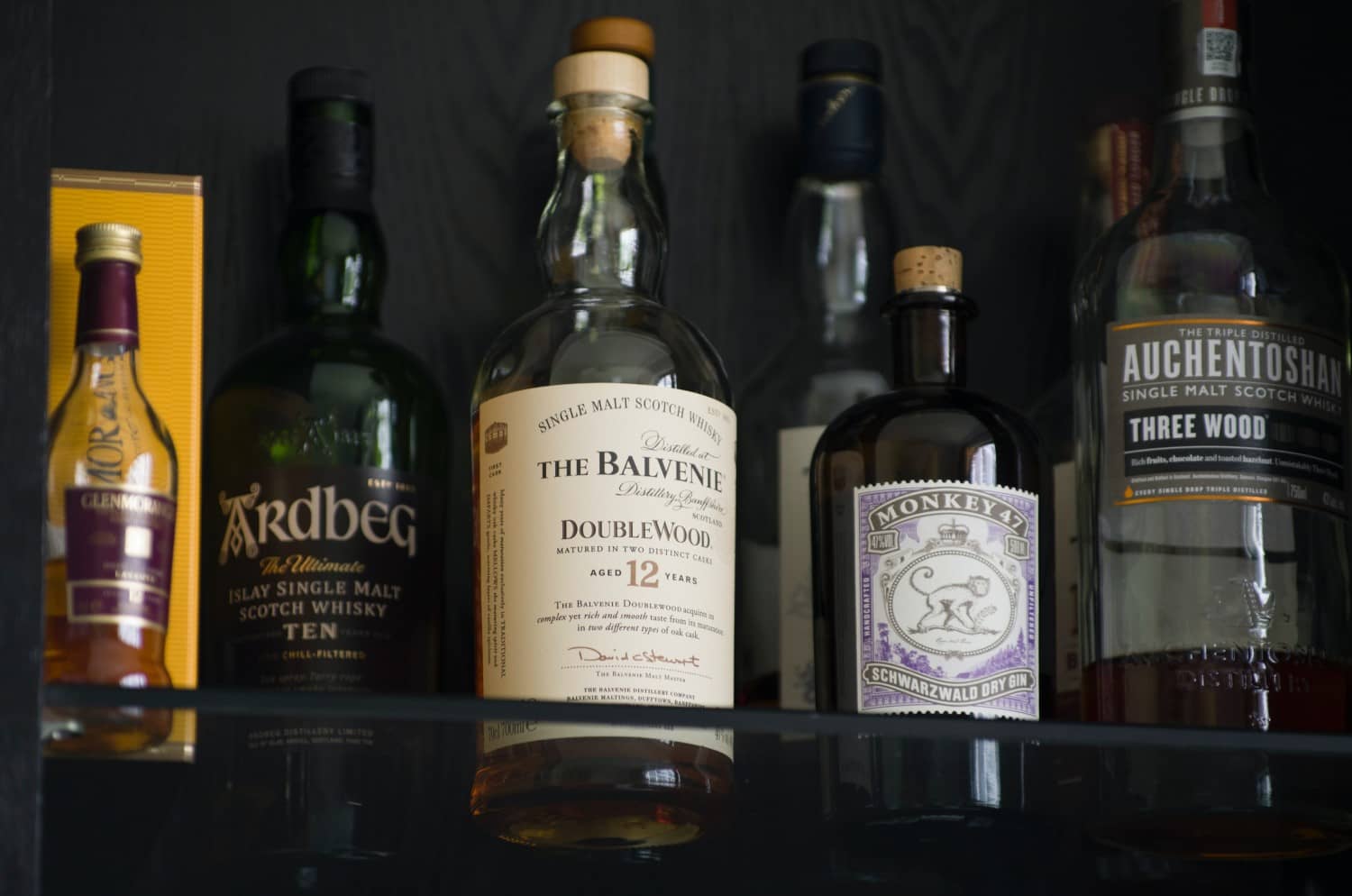
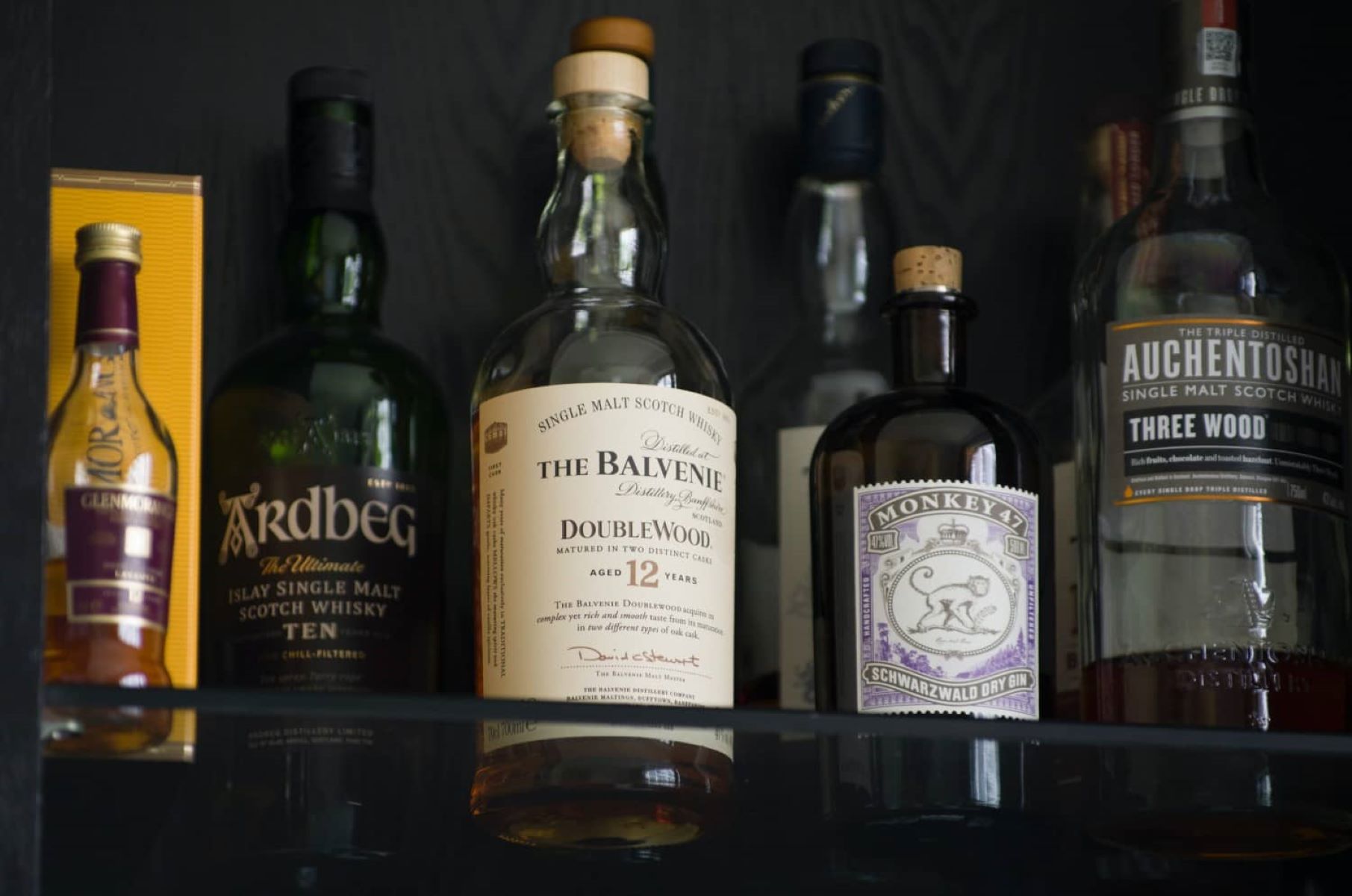
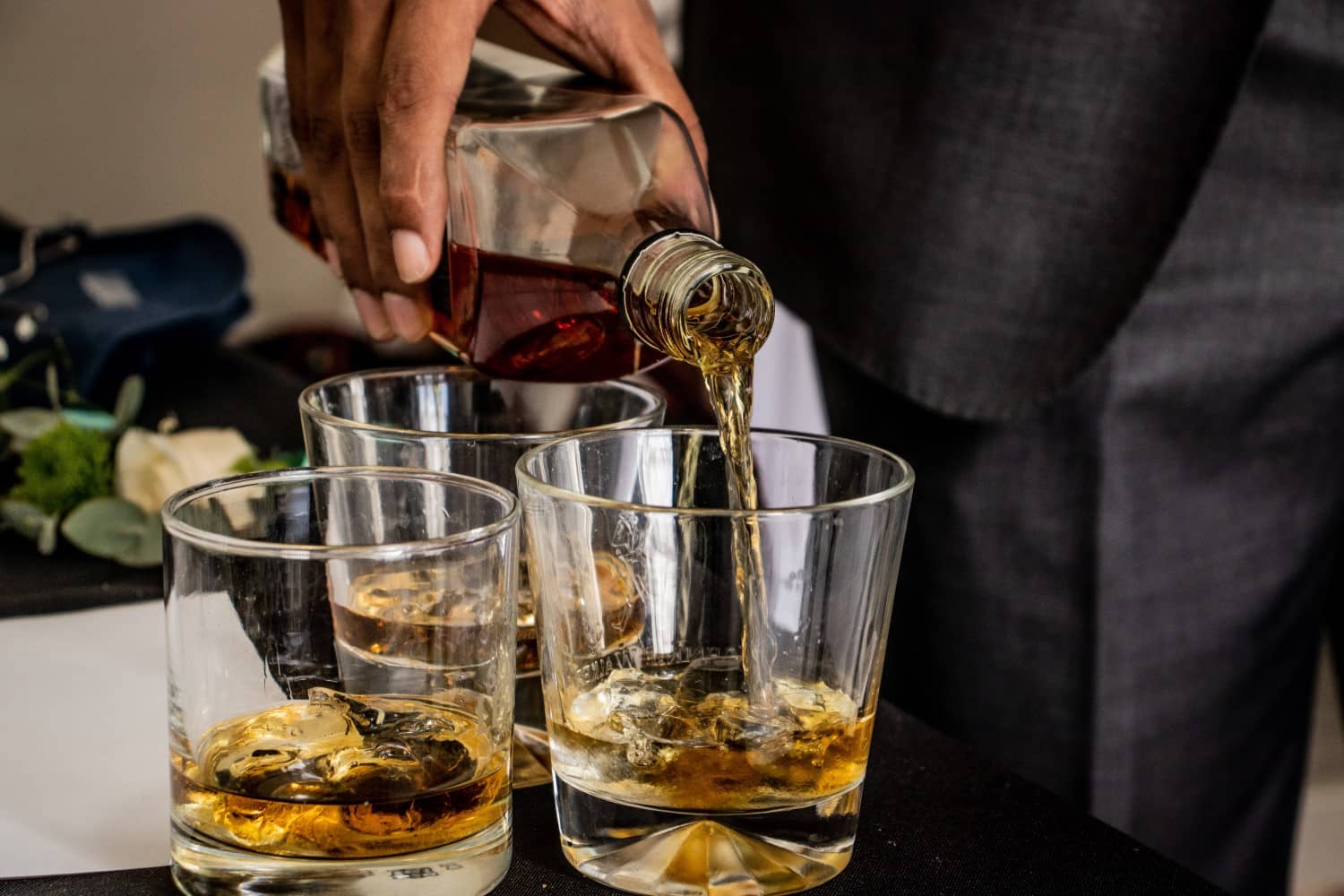

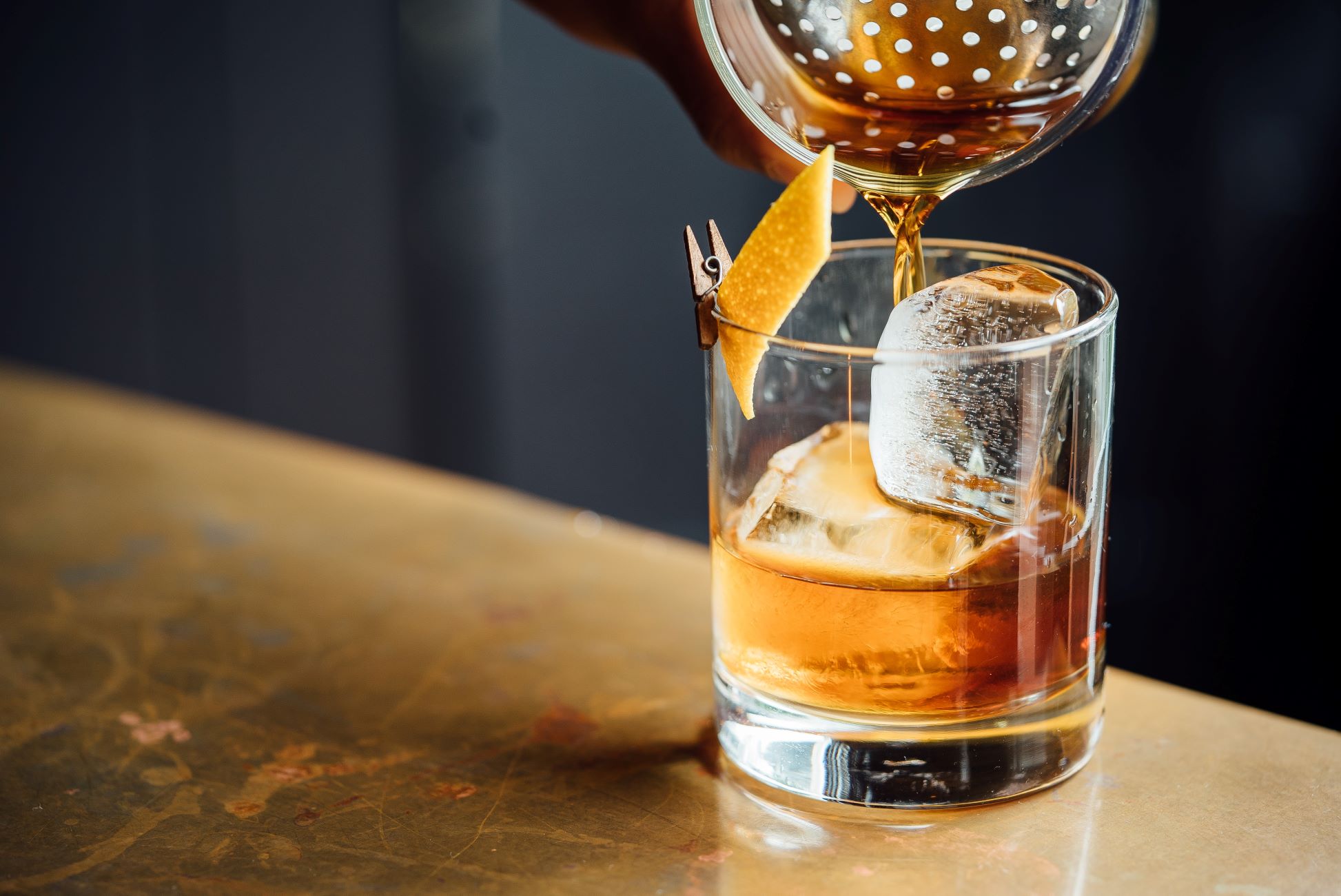

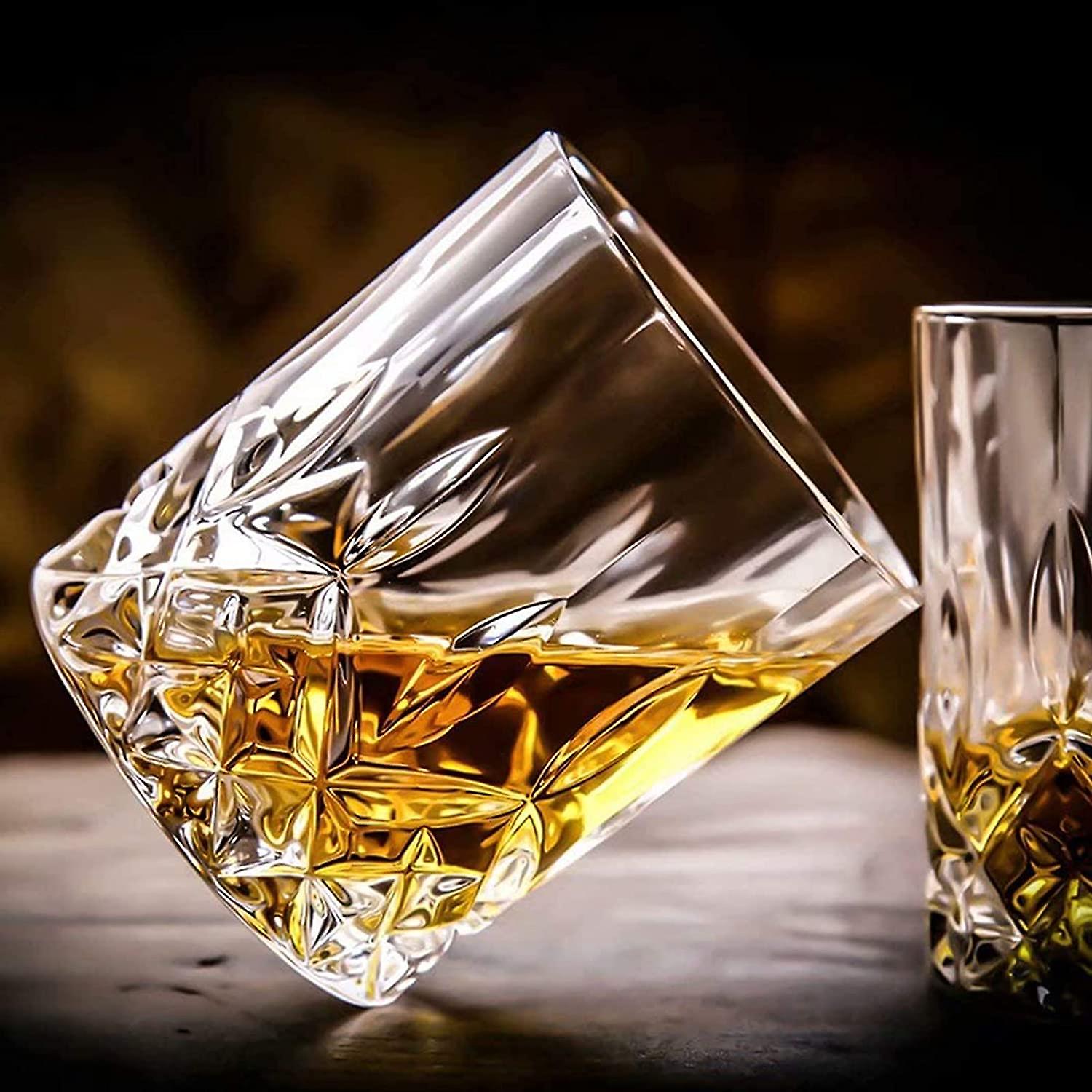
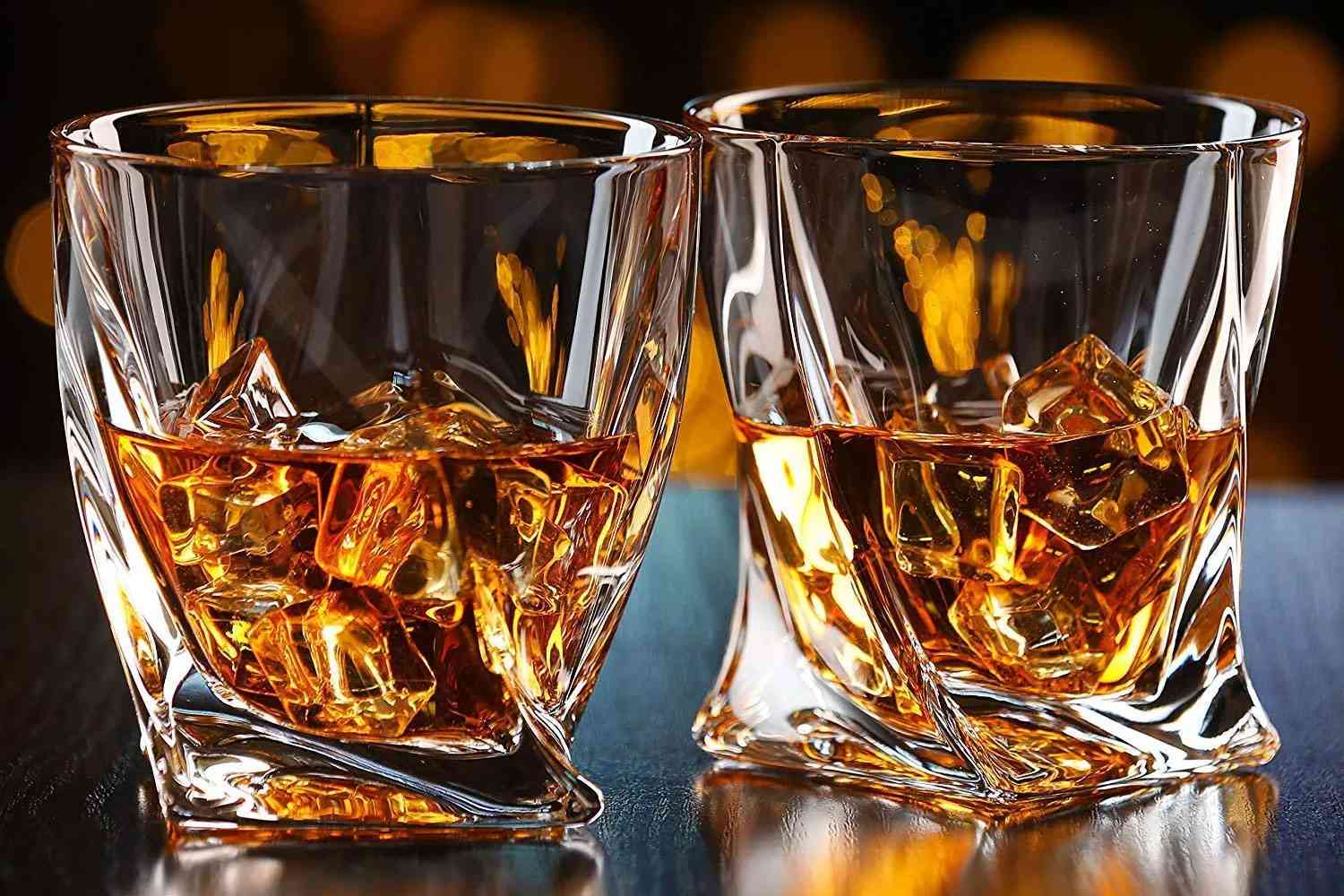




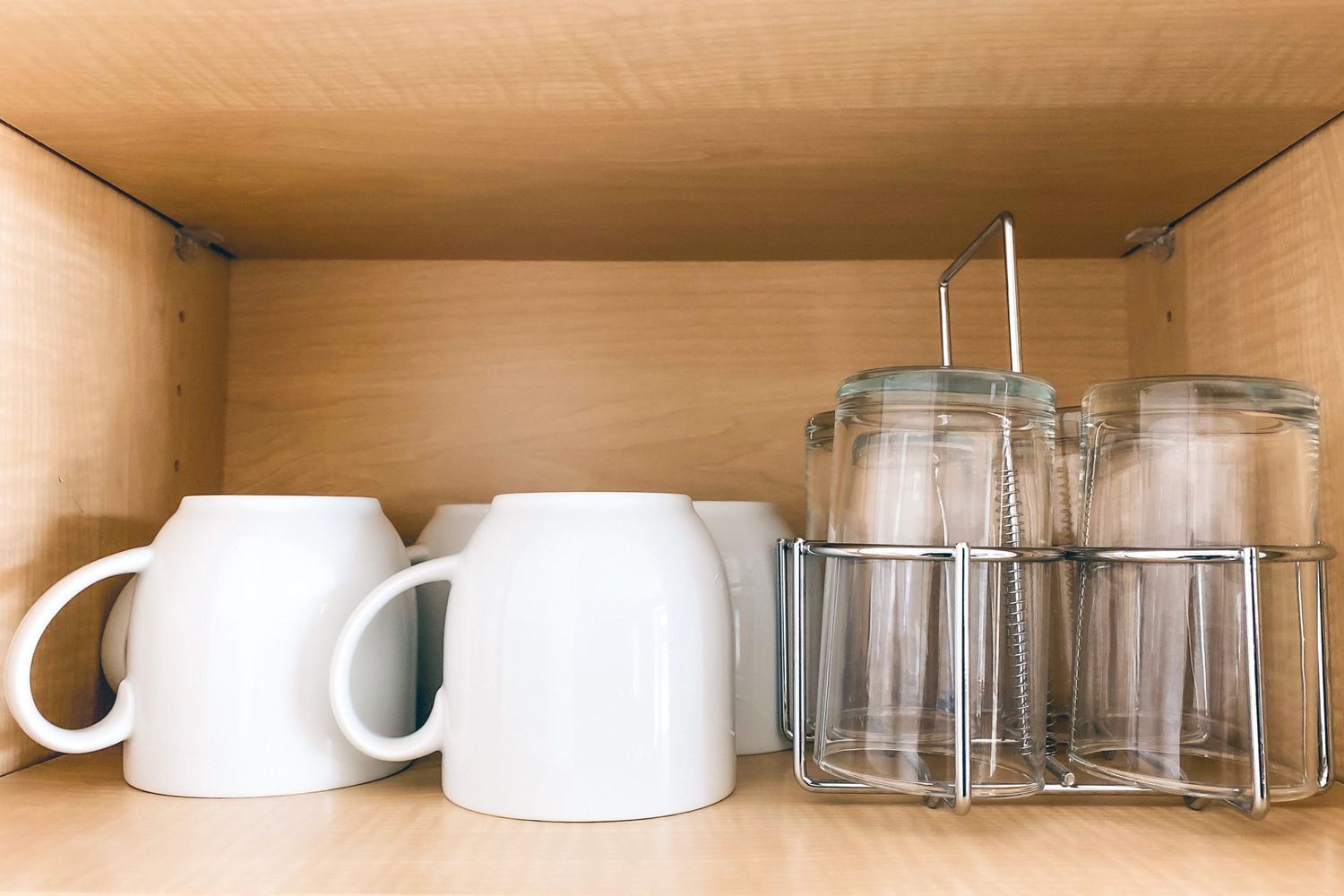

0 thoughts on “How To Store Whiskey”